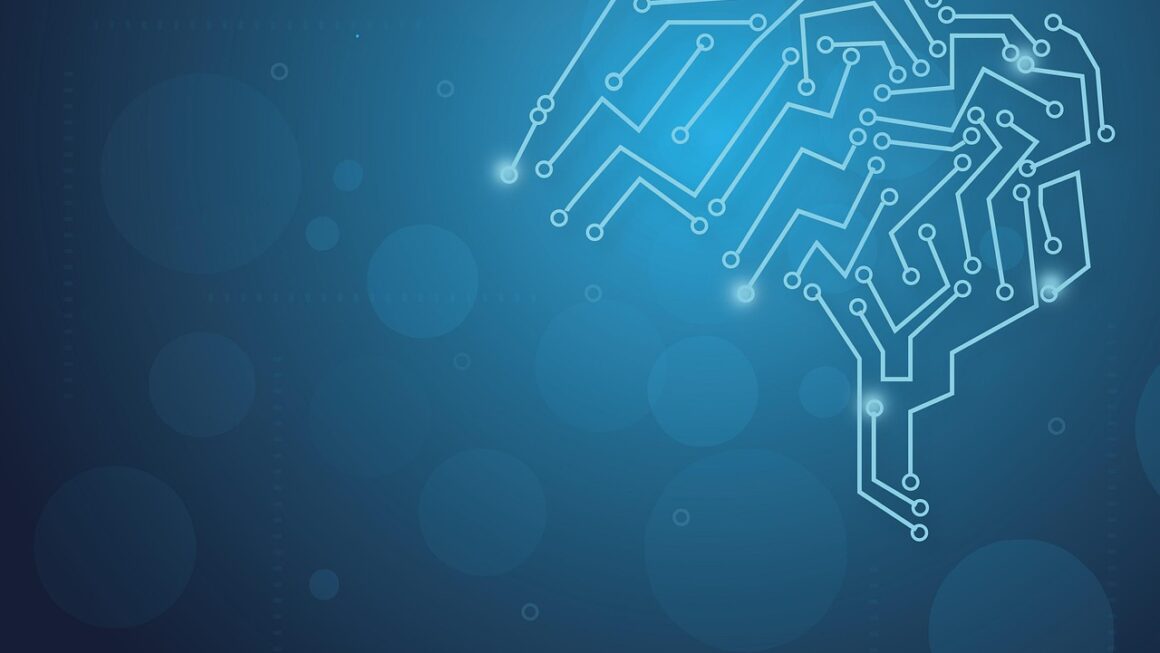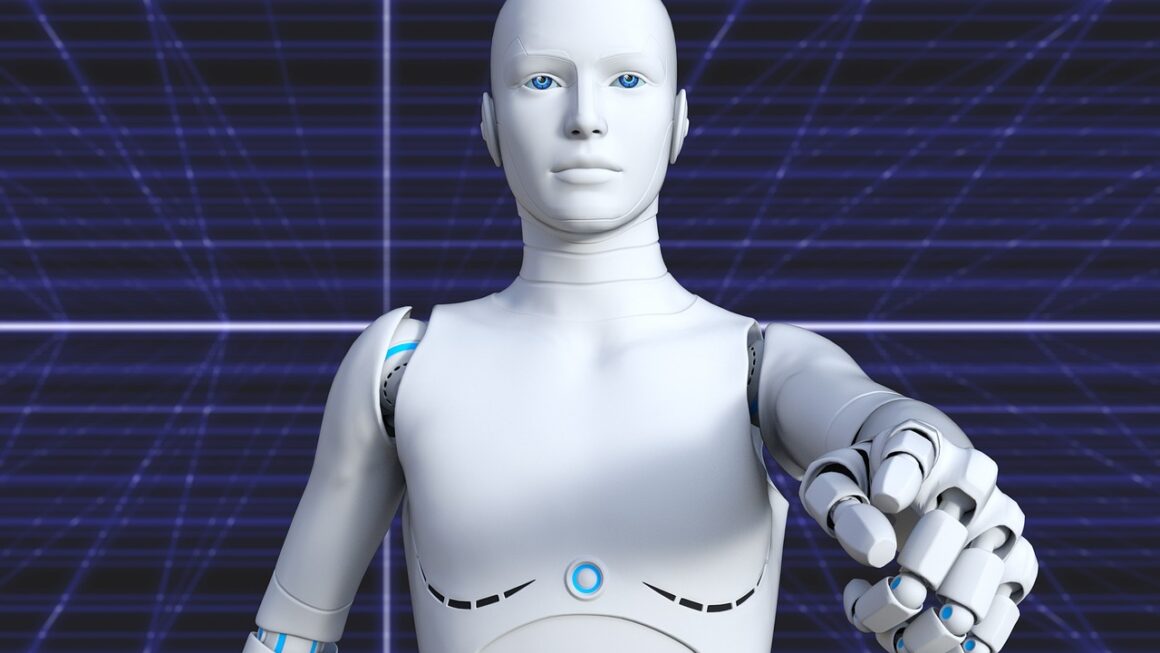AI is revolutionizing industries from healthcare to finance, but the magic behind these intelligent systems lies in a crucial process: AI model training. This is where raw data is transformed into sophisticated algorithms capable of prediction, automation, and problem-solving. Understanding the nuances of AI model training is essential for anyone looking to leverage the power of artificial intelligence. This post will explore the key aspects of AI model training, providing a comprehensive guide for beginners and experts alike.
Understanding the Fundamentals of AI Model Training
AI model training is the process of teaching an AI model to recognize patterns, make predictions, or perform specific tasks. This involves feeding the model large datasets, allowing it to learn from the data and adjust its internal parameters. The goal is to create a model that can generalize well to new, unseen data.
What is an AI Model?
An AI model is a mathematical representation of a real-world phenomenon, created to mimic human intelligence. It learns from data through various algorithms and adjusts its parameters to improve its performance over time.
Key Components of AI Model Training
- Data: The foundation of any AI model. High-quality, relevant data is crucial for effective training. Data can be structured (e.g., tabular data in a database) or unstructured (e.g., images, text, audio).
- Algorithm: The specific method used to learn from the data. Common algorithms include linear regression, decision trees, support vector machines, and neural networks.
- Model Architecture: The structure of the AI model, particularly important for neural networks, defining the layers, connections, and parameters.
- Loss Function: A measure of how well the model is performing. It quantifies the difference between the model’s predictions and the actual values.
- Optimization Algorithm: An algorithm used to adjust the model’s parameters to minimize the loss function. Gradient descent and its variants are commonly used.
- Evaluation Metrics: Used to assess the model’s performance on unseen data. Examples include accuracy, precision, recall, and F1-score.
The Importance of Data Quality
The quality of the data used for training directly impacts the performance of the AI model.
- Accuracy: Data must be accurate and free of errors.
- Completeness: The dataset should cover a wide range of scenarios and edge cases.
- Consistency: Data should be consistent in format and meaning.
- Relevance: The data should be relevant to the task the model is designed to perform.
- Volume: Generally, more data leads to better model performance, especially for complex models like deep neural networks.
- Example: Training an image recognition model with blurry or mislabeled images will result in a poorly performing model. Cleaning and pre-processing the data to ensure high quality is essential.
Steps Involved in the AI Model Training Process
Training an AI model involves a series of well-defined steps, each crucial for achieving optimal performance.
1. Data Collection and Preparation
- Data Gathering: Collecting data from various sources, such as databases, APIs, and web scraping.
- Data Cleaning: Handling missing values, outliers, and inconsistencies in the data. Techniques include imputation, outlier removal, and data transformation.
- Data Preprocessing: Transforming the data into a suitable format for the chosen algorithm. This may involve normalization, scaling, and feature engineering.
- Data Splitting: Dividing the data into training, validation, and testing sets. The training set is used to train the model, the validation set is used to tune hyperparameters, and the testing set is used to evaluate the final performance.
2. Model Selection and Architecture Design
- Algorithm Selection: Choosing the appropriate algorithm based on the type of data, the task, and the desired performance. Consider factors such as interpretability, scalability, and computational cost.
- Architecture Design: Designing the structure of the model, particularly for neural networks. This involves determining the number of layers, the number of neurons in each layer, and the type of activation functions to use.
- Hyperparameter Tuning: Selecting the optimal values for hyperparameters, which control the learning process. Techniques include grid search, random search, and Bayesian optimization.
3. Model Training and Optimization
- Training Loop: Iteratively feeding the training data to the model and adjusting its parameters to minimize the loss function. This involves calculating the gradient of the loss function and updating the parameters using an optimization algorithm.
- Loss Function Selection: Choosing the appropriate loss function based on the task. Common loss functions include mean squared error for regression tasks and cross-entropy for classification tasks.
- Optimization Algorithm Implementation: Implementing an optimization algorithm, such as gradient descent or Adam, to efficiently update the model’s parameters.
- Regularization: Applying techniques to prevent overfitting, such as L1 or L2 regularization, dropout, and early stopping.
4. Model Evaluation and Refinement
- Performance Metrics Calculation: Evaluating the model’s performance on the testing set using relevant metrics, such as accuracy, precision, recall, and F1-score.
- Model Analysis: Analyzing the model’s strengths and weaknesses to identify areas for improvement. This may involve examining the confusion matrix, feature importance, and learning curves.
- Iteration and Refinement: Repeating the training process with adjustments to the data, model architecture, or hyperparameters to improve performance.
- Example: Imagine training a spam detection model. The data preparation step would involve cleaning the text data (removing punctuation, converting to lowercase), feature engineering (creating features like word frequency and presence of certain keywords), and splitting the data into training, validation, and test sets. The model selection step would involve choosing a suitable algorithm (e.g., Naive Bayes or Logistic Regression), and the training step would involve feeding the data to the model and optimizing its parameters to minimize the error in classifying emails as spam or not spam. Finally, the evaluation step would involve measuring the accuracy and precision of the model on the test set and refining the model if necessary.
Tools and Technologies for AI Model Training
Various tools and technologies are available to facilitate AI model training, catering to different skill levels and requirements.
Popular Frameworks and Libraries
- TensorFlow: An open-source machine learning framework developed by Google, widely used for building and training deep learning models.
- PyTorch: An open-source machine learning framework developed by Facebook, known for its flexibility and ease of use.
- Scikit-learn: A Python library providing simple and efficient tools for data mining and data analysis, including various machine learning algorithms.
- Keras: A high-level API for building and training neural networks, running on top of TensorFlow or other backends.
Cloud-Based Platforms
- Amazon SageMaker: A fully managed machine learning service that enables developers and data scientists to quickly and easily build, train, and deploy machine learning models.
- Google Cloud AI Platform: A suite of machine learning services offered by Google Cloud, including tools for data preparation, model training, and deployment.
- Microsoft Azure Machine Learning: A cloud-based machine learning service that provides a collaborative environment for building, training, and deploying machine learning models.
Hardware Acceleration
- GPUs (Graphics Processing Units): Specialized processors designed for parallel computing, ideal for accelerating the training of deep learning models.
- TPUs (Tensor Processing Units): Custom-designed hardware accelerators developed by Google specifically for deep learning tasks.
- Example: A data scientist working on a complex image recognition project might choose to use TensorFlow and a cloud-based platform like Amazon SageMaker to leverage the power of GPUs and distributed training. This would allow them to train a large neural network on a massive dataset in a reasonable amount of time.
Challenges and Best Practices in AI Model Training
AI model training is not without its challenges. Understanding these challenges and adopting best practices can significantly improve the success of your AI projects.
Common Challenges
- Overfitting: The model performs well on the training data but poorly on unseen data.
- Underfitting: The model is too simple to capture the underlying patterns in the data.
- Bias: The data or model contains biases that lead to unfair or inaccurate predictions.
- Data Scarcity: Insufficient data to adequately train the model.
- Computational Cost: Training complex models can be computationally expensive and time-consuming.
Best Practices
- Data Augmentation: Creating new training data by applying transformations to existing data, such as rotating, scaling, and cropping images.
- Cross-Validation: Evaluating the model’s performance using multiple train-test splits to get a more robust estimate of its generalization ability.
- Regularization Techniques: Applying L1 or L2 regularization, dropout, and early stopping to prevent overfitting.
- Bias Detection and Mitigation: Identifying and mitigating biases in the data and model. This may involve collecting more diverse data, using fairness-aware algorithms, and carefully evaluating the model’s performance across different subgroups.
- Monitoring and Retraining: Continuously monitoring the model’s performance in production and retraining it as needed to maintain accuracy and adapt to changes in the data.
- Example: If a model trained to predict loan defaults performs poorly on a new demographic group, it might indicate a bias in the training data. To address this, the data scientist could collect more data from that demographic group or use a fairness-aware algorithm to mitigate the bias. Regular monitoring and retraining would also be essential to ensure the model remains accurate and fair over time.
Conclusion
AI model training is the cornerstone of artificial intelligence, enabling machines to learn from data and perform complex tasks. By understanding the fundamental concepts, following a structured training process, leveraging appropriate tools and technologies, and addressing common challenges, you can build powerful and effective AI models that drive innovation and solve real-world problems. Remember that continuous learning and adaptation are crucial in the ever-evolving field of AI.




